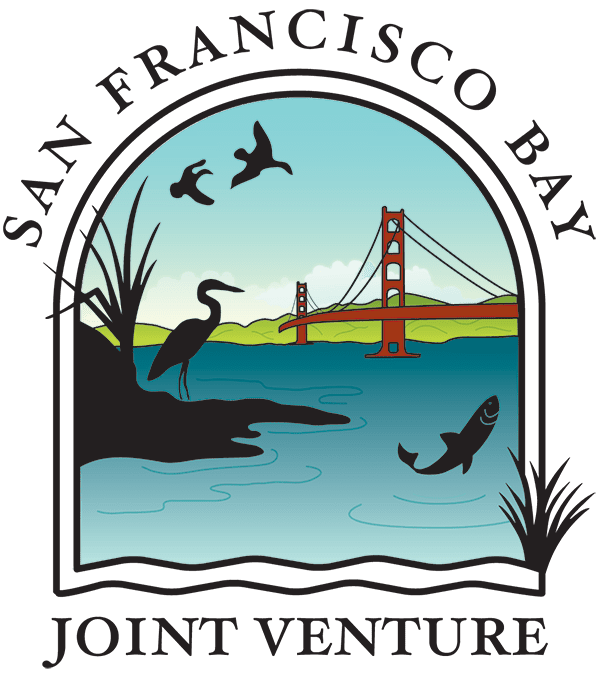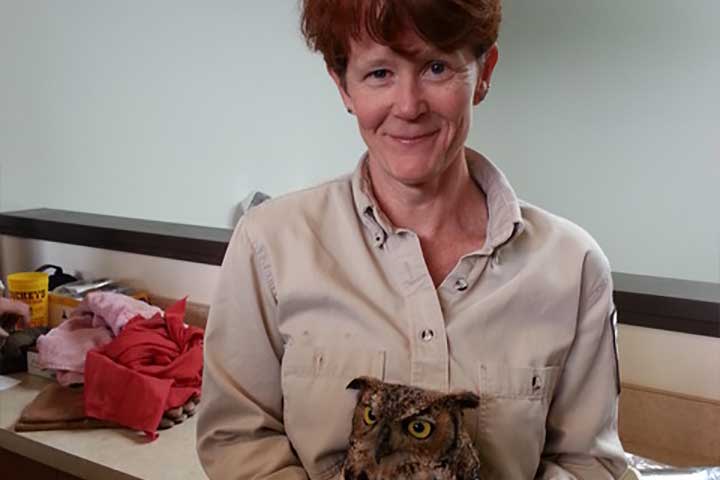Name: Cheryl Strong
Position/Occupation: Wildlife Biologist, US Fish and Wildlife Service
May 2019
Cheryl Strong has been a wildlife biologist at the Don Edwards San Francisco Bay National Wildlife Refuge for about 12 years. Before working for the Refuge, Cheryl worked for the San Francisco Bay Bird Observatory as the Waterbirds Program Director. The difference, in her words, when moving from a non-profit into public service “same birds and science, more paperwork.”
Cheryl grew up in a small town in the Central Valley of California. After graduating from UC Santa Barbara, she held various temporary field jobs, like many wildlife-biologists-in-training do. She worked on mammals in the Sierra Nevada’s, bald eagles in Arizona, nesting songbirds in Arkansas, and endangered Willow Flycatchers in southeastern California. Later she migrated south and did her graduate research on the foraging ecology of wintering birds in Southern Louisiana’s pine forests. During her summers of graduate school and for a few years afterwards she mist-netted understory rainforest birds in the Amazon Basin for the Biological Dynamics of Forest Fragments Project in Brazil. Through all of these experiences she says “the best parts were being outside, learning about different places, seeing amazing wildlife, meeting new and interesting people, and learning the names of many types of monkeys in Portuguese.” And the worst? “Chiggers!” common in the rainforest as well as the southeast portion of the US.
At the Refuge, Cheryl has focused on managed pond and tidal marsh restoration as part of the South Bay Salt Pond Restoration Project. Her emphasis has been on waterfowl and shorebird conservation, especially the birds that utilize salt ponds and wildlife-managed ponds. These artificial habitats have become important to migratory birds, as they have lost wetland habitats in other areas along their migration routes. She has also been working with endangered species which often have opposing needs to the migratory birds and make for a more challenging and interesting workload! One of Cheryl’s main objectives regarding South Bay Salt Pond Restoration Project has been to balance the needs of endangered species such as the marsh-loving Ridgway’s rail and the dry salt-panne loving Western Snowy Plover with the tens of thousands of waterfowl and shorebirds that utilize the ponds. Cheryl is a big believer in the adaptive management process and the South Bay Salt Pond Restoration Project has been a poster child for this process for the past 15 years.
In her role, Cheryl has also helped band raptors in partnership with the local Ohlone Humane Society Wildlife Rehabilitation and Golden Gate Audubon, and been helping to teach mist-netting and bird banding as part of a wildlife field methods course in conjunction with Cal Poly San Luis Obispo and the Western Section of the Wildlife Society. When asked what she loved most about these aspects of her job, both her sincerity and humor came through with the comment that she “really enjoyed training the next generation of scientists and handling birds with sharp talons.”
After 17 years in the Bay area, Cheryl and family are moving to Oregon this summer where she will be the Fish and Wildlife Biologist for endangered species along the Oregon coast, part of the Oregon Fish and Wildlife Office (still USFWS). Stationed in Newport, Oregon, a town of approximately 10,000, Cheryl will focus her efforts on Western Snowy Plover and other coastal species. She is looking forward to spending less time in traffic and more time exploring the woods behind their new house, and the local beaches and estuaries. Moving along with her is her husband, David Thomson, Habitats Program Manager at the San Francisco Bay Bird Observatory, her 14-year old daughter, 2 cats, 2 rabbits, and one old dog.

